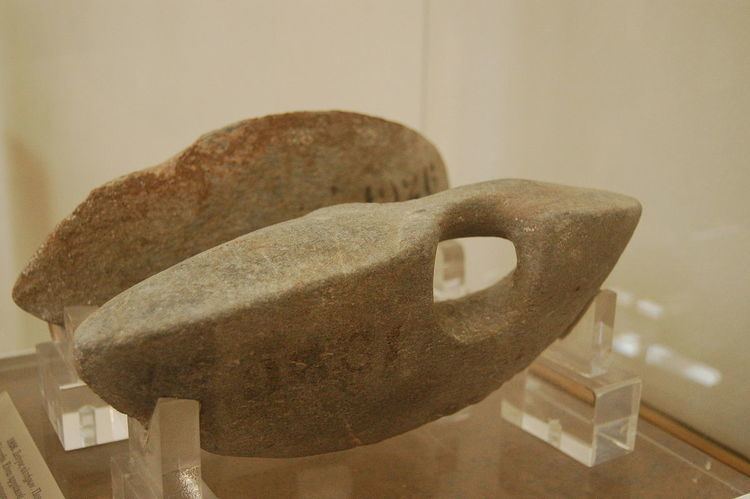 | ||
Halteres (Greek: ἁλτῆρες, from "ἅλλομαι" - hallomai, "leap, spring"; cf. "ἅλμα" - halma, "leaping") were a type of dumbbells used in Ancient Greece. In ancient Greek sports, halteres were used as lifting weights, and also as weights in their version of the long jump, which was probably a set of three jumps. Halteres were held in both hands to allow an athlete to jump a greater distance; they may have been dropped after the first or second jump. According to archaeological evidence, the athlete would swing the weights backwards and forwards just before take-off, thrust them forwards during take-off, and swing them backwards just before releasing them and landing. Halteres were made of stone or metal, and weighed between 2 and 9 kg (4 and 20 lb).
Writing in Nature, biophysicist Alberto E. Minetti calculates that halteres added about 17 cm (7 in) to a 3 m (10 ft) long jump.
